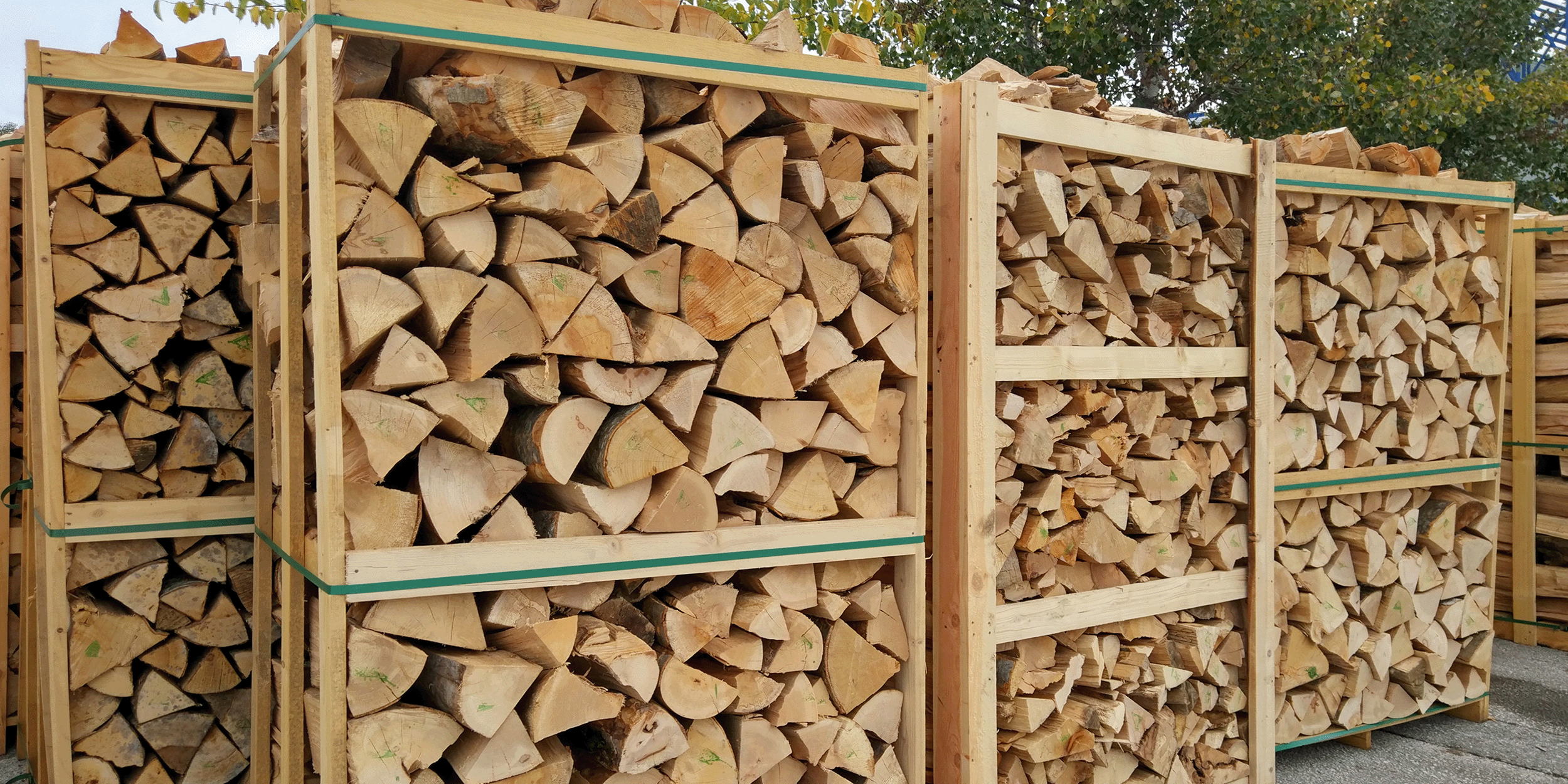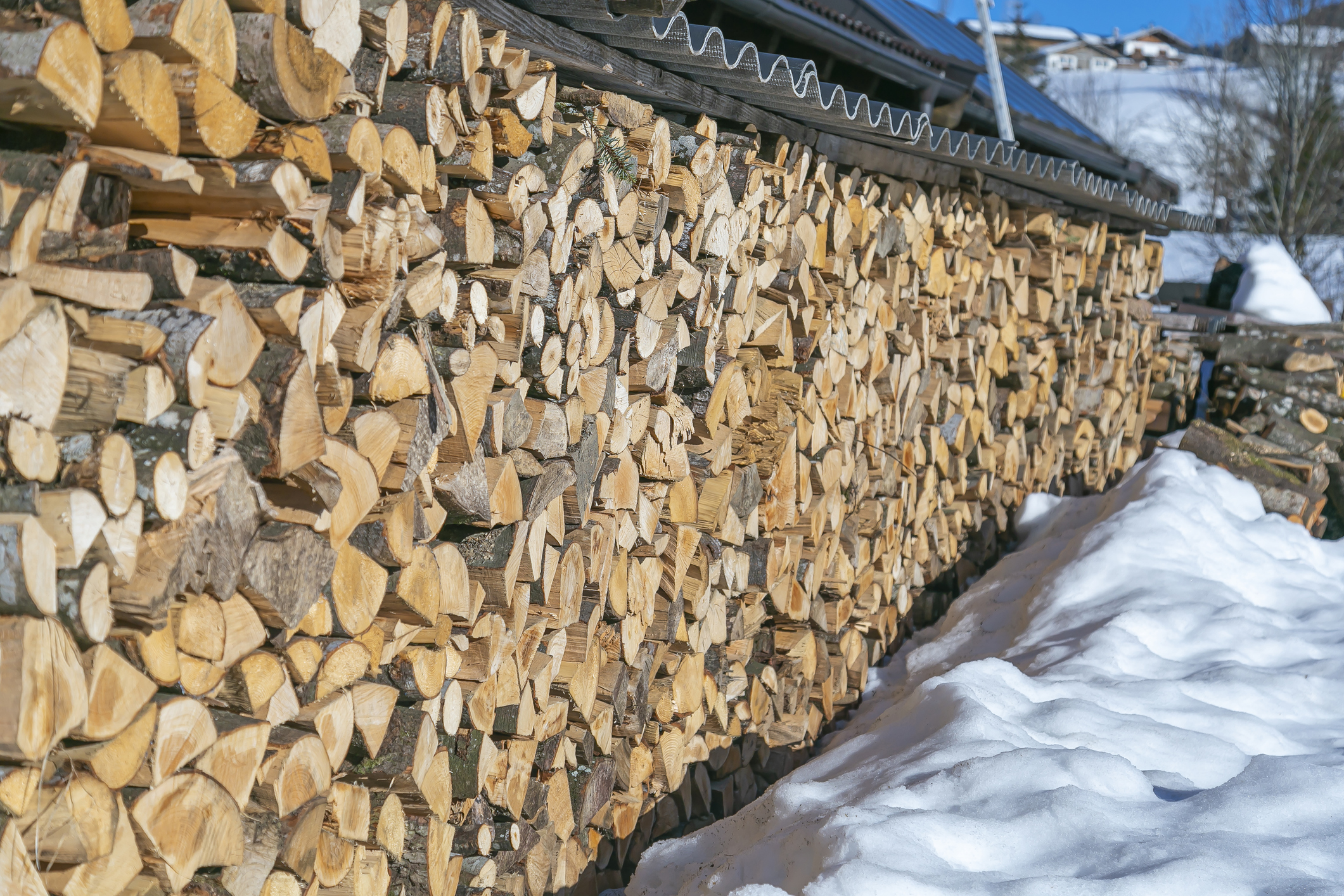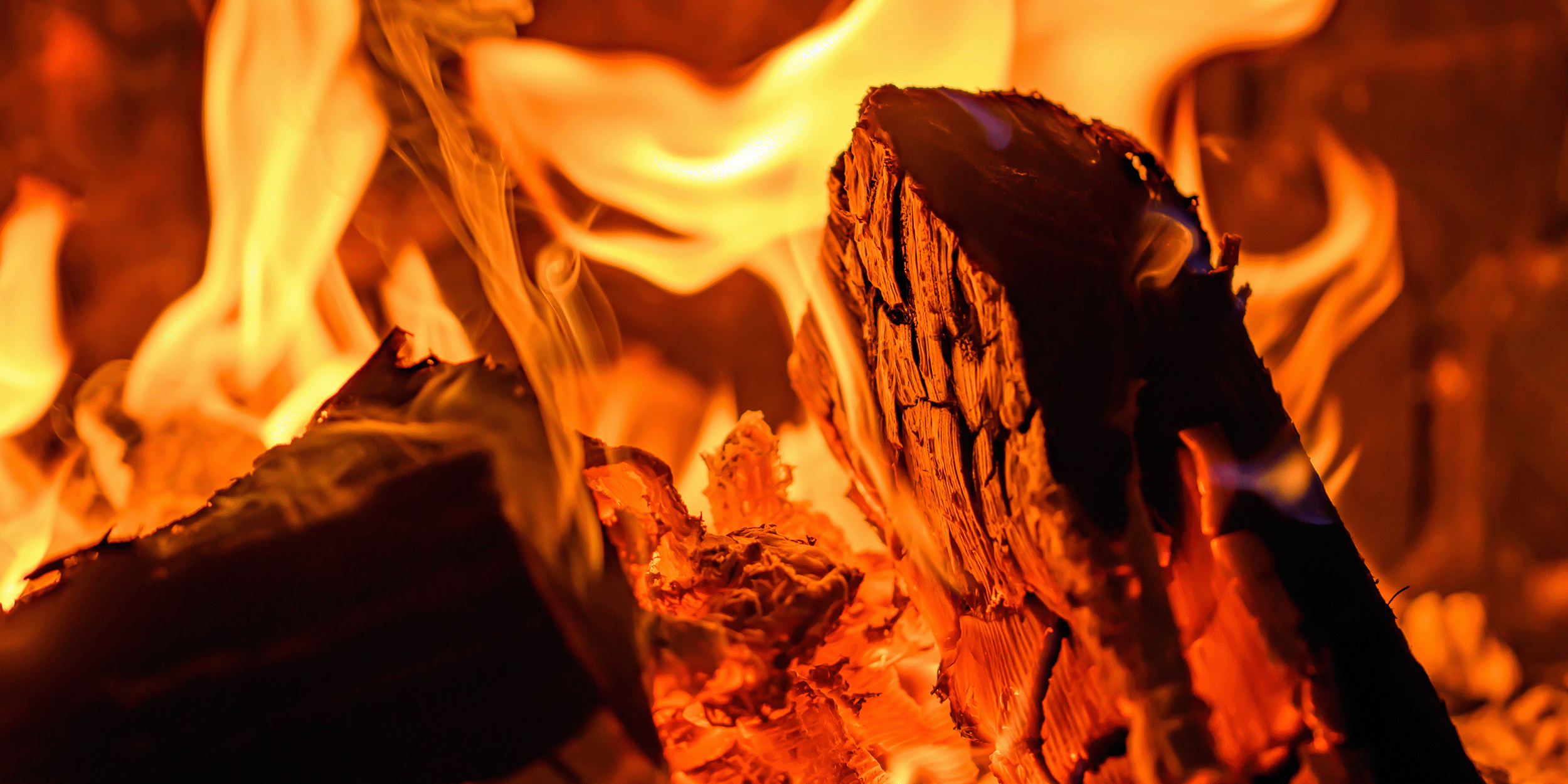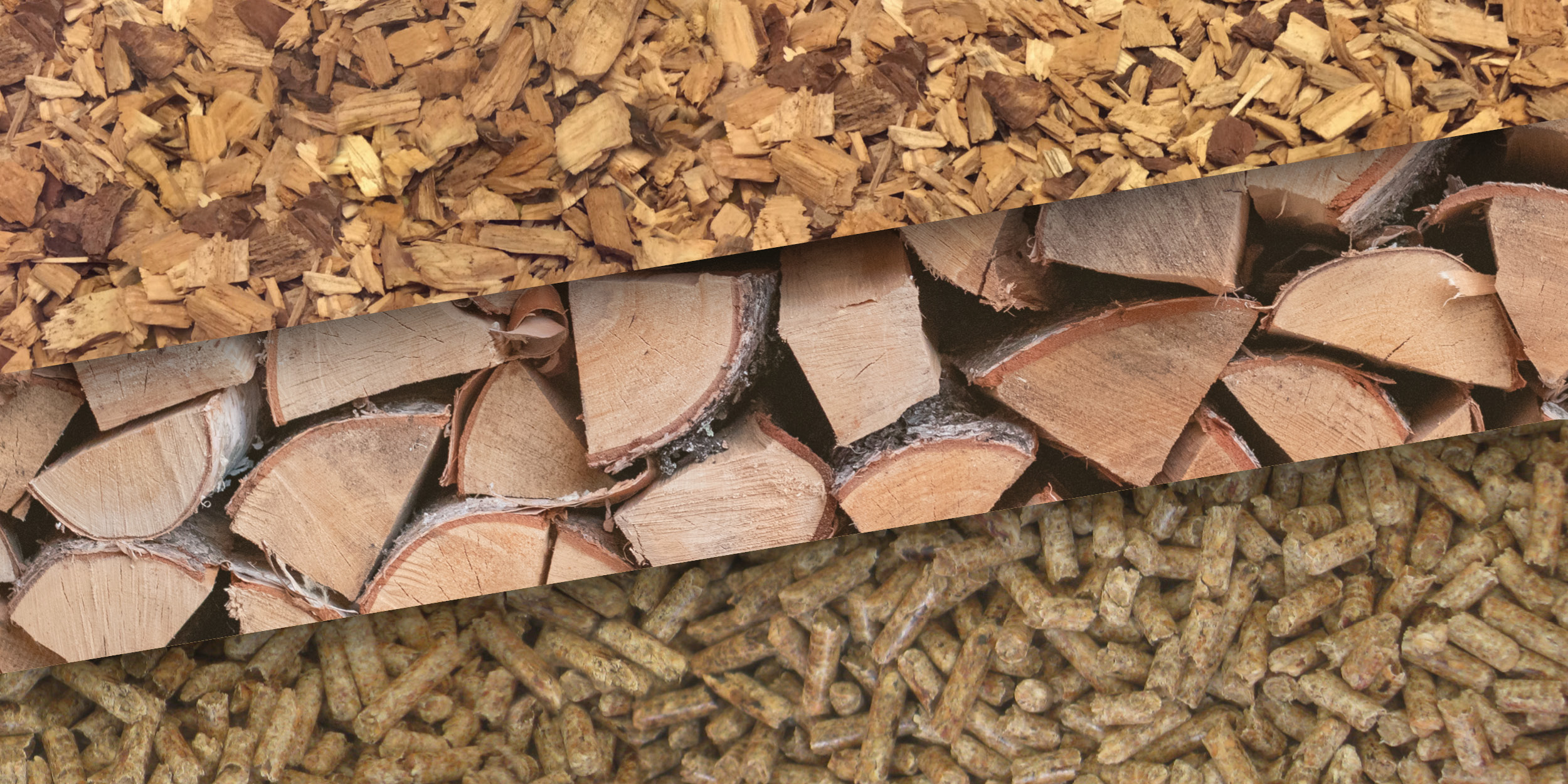How to use a moisture meter
Rapid moisture meters are a useful tool for estimating the moisture content of firewood, providing assurance that your wood’s moisture content does not exceed 20% and is ready for burning.
Moisture meters are readily available online, at your local DIY store, or can be purchased directly through Woodsure by getting in touch with the team. There are a wide variety of prices for moisture meters, depending on the capabilities and features of the meter.
How to measure moisture content in firewood
1. Select three logs from your log store – choosing logs from different areas will give a more representative reading.
2. Split your logs down the centre.
3. Wipe any surface moisture off your split wood.
4. Press your meter’s pins firmly into your wood – across the grain – taking a number of readings across different locations of the wood.
5. Record the results and repeat the process for your other logs, calculating the average moisture content for this load of wood.
This video visually demonstrates how to measure moisture content of your firewood.
Repeating the process across three logs stored from different areas (top, middle, and bottom of your pile, for example) will give a representative sample of your log store.
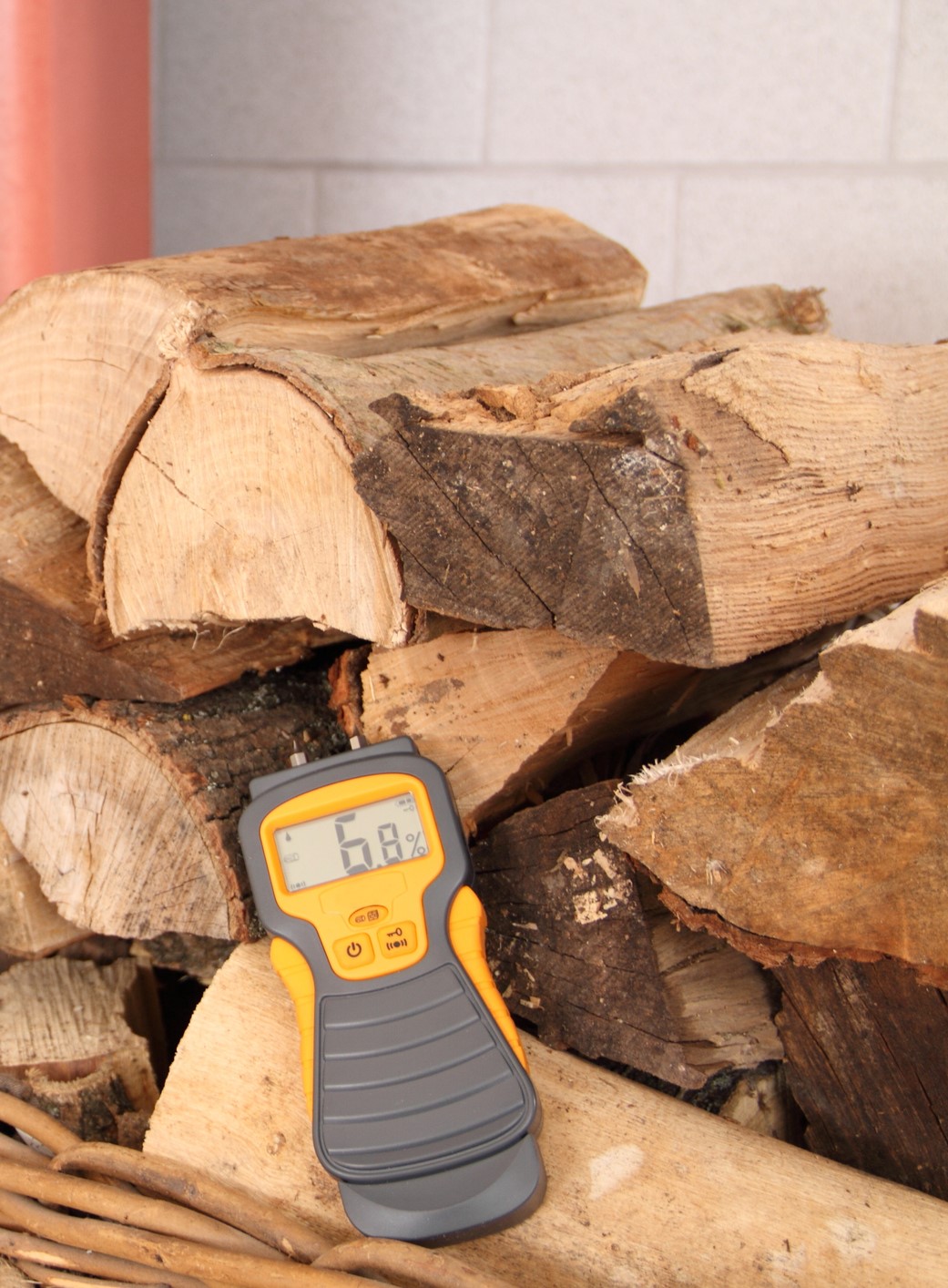
Your firewood’s moisture content can change after time in storage, with factors such as adverse weather conditions resulting in moisture reabsorption. Ensure you regularly check your firewood’s moisture content so you can continue burning wood with a moisture content of 20% or less.
Your firewood’s moisture content can change after time in storage, with factors such as adverse weather conditions resulting in moisture reabsorption. Ensure you regularly check your firewood’s moisture content so you can continue burning wood with a moisture content of 20% or less.
Top tips when using a moisture meter
Measure the moisture content from the newly exposed face of your log, splitting your firewood just before your measure. By sampling the centre of your wood you will get the most accurate reading.
Insert the meter’s pins firmly into your wood. As moisture is present beyond the surface, you want to make sure your pins are inserted deep into your wood so you can get the most accurate reading.
Press your meter’s pins across the grain of your log. The conductivity is much greater across the grain as opposed to measuring with the grain. Measuring with the grain can give an inaccurate reading and skew results.
Don’t measure over knots or irregular grains in your wood. The characteristics of the grain affects the rate of moisture loss in your wood; measuring over a knot will give an unrepresentative reading that differs from the rest of the log.
Wipe your split firewood to eliminate any surface moisture; even small amounts of surface moisture can greatly affect readings.
If you have longer logs (that you will likely have sourced yourself), cut a sample from the middle to split and measure. This will ensure you are measuring the most representative sample; a measurement taken from the end of a long log could have a vastly different moisture content to the centre.
As different models of moisture meters can have varying operating methods, it is best practice to follow the manufacturer’s instructions follow the manufacturer’s instructions for certainty you are measuring your firewood’s moisture content correctly.
Why should you measure moisture content?
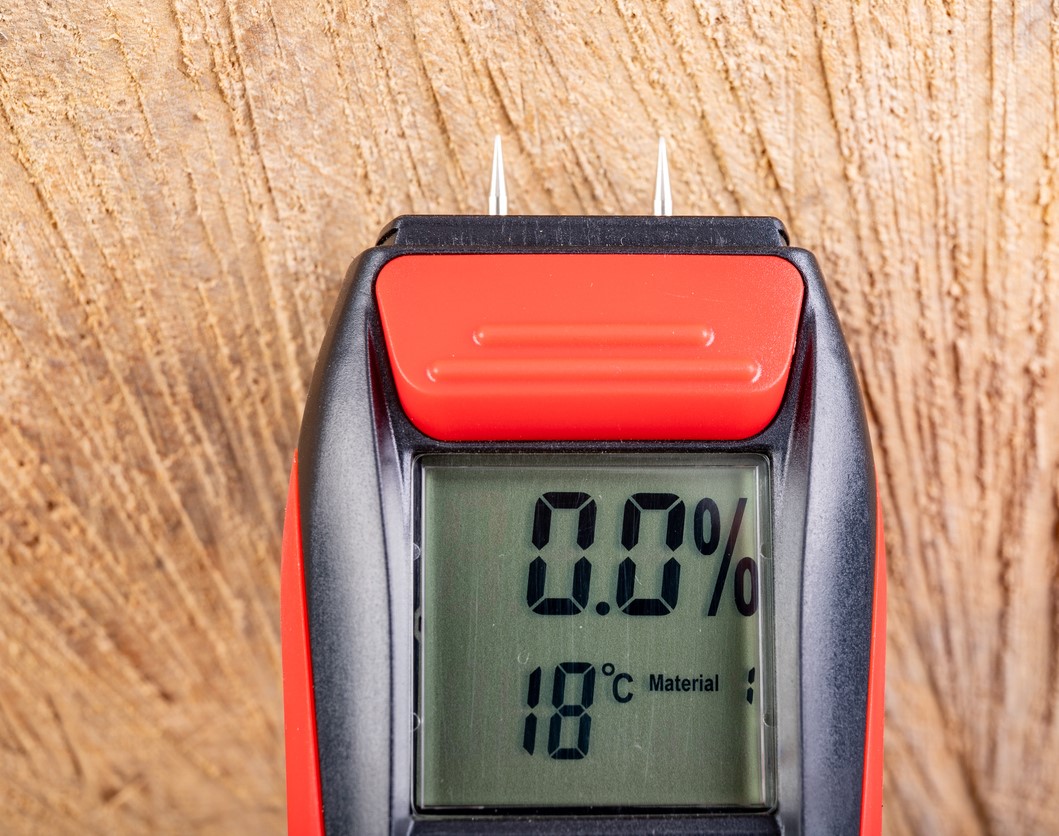
Firewood with a moisture content of 20% or less burns more efficiently and safely, reducing the risk of a chimney fire or carbon monoxide poisoning. Wet wood (wood with a moisture content of over 20%) produces less heat and more smoke, resulting in a build-up of highly flammable substances in the flue that greatly increases the chance of a dangerous chimney fire occurring.
Even if you have purchased Ready to Burn wood, it is possible for your wood to reabsorb moisture whilst in storage. Using a moisture meter is a quick and easy way to ensure your wood hasn’t reabsorbed moisture and is still ready to burn.
Firewood with a moisture content of 20% or less burns more efficiently and safely, reducing the risk of a chimney fire or carbon monoxide poisoning. Wet wood (wood with a moisture content of over 20%) produces less heat and more smoke, resulting in a build-up of highly flammable substances in the flue that greatly increases the chance of a dangerous chimney fire occurring.
Even if you have purchased Ready to Burn wood, it is possible for your wood to reabsorb moisture whilst in storage. Using a moisture meter is a quick and easy way to ensure your wood hasn’t reabsorbed moisture and is still ready to burn.
Factors that can affect moisture content readings
There are a range of factors that can affect your moisture readings – being aware of these variables will ensure you are able to accurately measure your firewood’s moisture content
Wood species
Each species of wood has its own unique chemical composition and characteristics. The density, salt content, conductivity, and extractives present across different species of wood can affect the wood’s conductivity and, in turn, the moisture reading. Some moisture meters come with a feature that allows for wood species correction, automatically correcting the reading when you input the species of wood you are testing. Moisture meters without a species correction function will typically contain a table in the manufacturer’s instructions, allowing you to manually correct the reading depending on the species of wood being tested.
Temperature
Ensure your firewood is close to room temperature when measuring its firewood content. Approximately every ±10°C causes a 1% difference in your reading in comparison to the actual moisture content. Frozen wood cannot have its moisture content tested.
Depth of measurement
The pins of your meter must be firmly inserted into wood to provide an accurate reading. If the pins are not pressed deep enough into the wood, they may measure a section that is close to the surface and provide an inaccurate reading. Some models of moisture meters have different sized pins; there can be slight variations in readings across multiple meters if their pins are different lengths as they measure the moisture content at varying depths.
Battery of moisture meter
If your moisture meter has low battery, it can provide inaccurate readings. Always check the battery of your meter before use to prevent false readings.
Time taken to measure moisture content after splitting
As the moisture content of your freshly split wood can quickly change, itt is important to measure your firewood’s moisture content immediately after splitting your log to get the most accurate reading.
Moisture meter calibration
If you haven’t used your moisture meter for a while, it has been in use for a long time, or you’ve accidentally dropped it, there is a chance your meter could not be calibrated correctly. Depending on the moisture meter you have purchased, you could calibrate it yourself with the press of a button or you can use the manufacturer’s calibration verification reference. If your meter didn’t come with either of these options, you can purchase a calibration verification reference from the manufacturer.
Decay
Decay due to fungus or excessive moisture, for example, can impede moisture content readings by greatly affecting the conductivity of your wood. If your wood has signs of fungal decay or rot, it is highly recommended to dispose of it and investigate your log pile for any other signs of decay.
Proximity to metal
Due to how moisture meters function, taking a reading in close proximity to metal can skew readings. Keeping the immediate area clear of metal and not resting your firewood on a metal surface whilst measuring its moisture content will prevent any interference with your readings.
It is vital to keep your firewood ready to burn, with a moisture content of 20% or less. Investing in a moisture meter provides assurance that your log store is remaining at the optimal moisture content. Accurately measuring your firewood’s moisture content, following the manufacturer’s instructions, and storing your firewood correctly will greatly assist in keeping your wood ready to burn.
The Woodsure Advice Hub has a range of tips and advice to keep you burning safely and responsibly.
Looking for something else?
Using the handy Woodsure postcode search you can search for local
suppliers of firewood, briquettes, wood pellets, wood chip and hog fuel.
